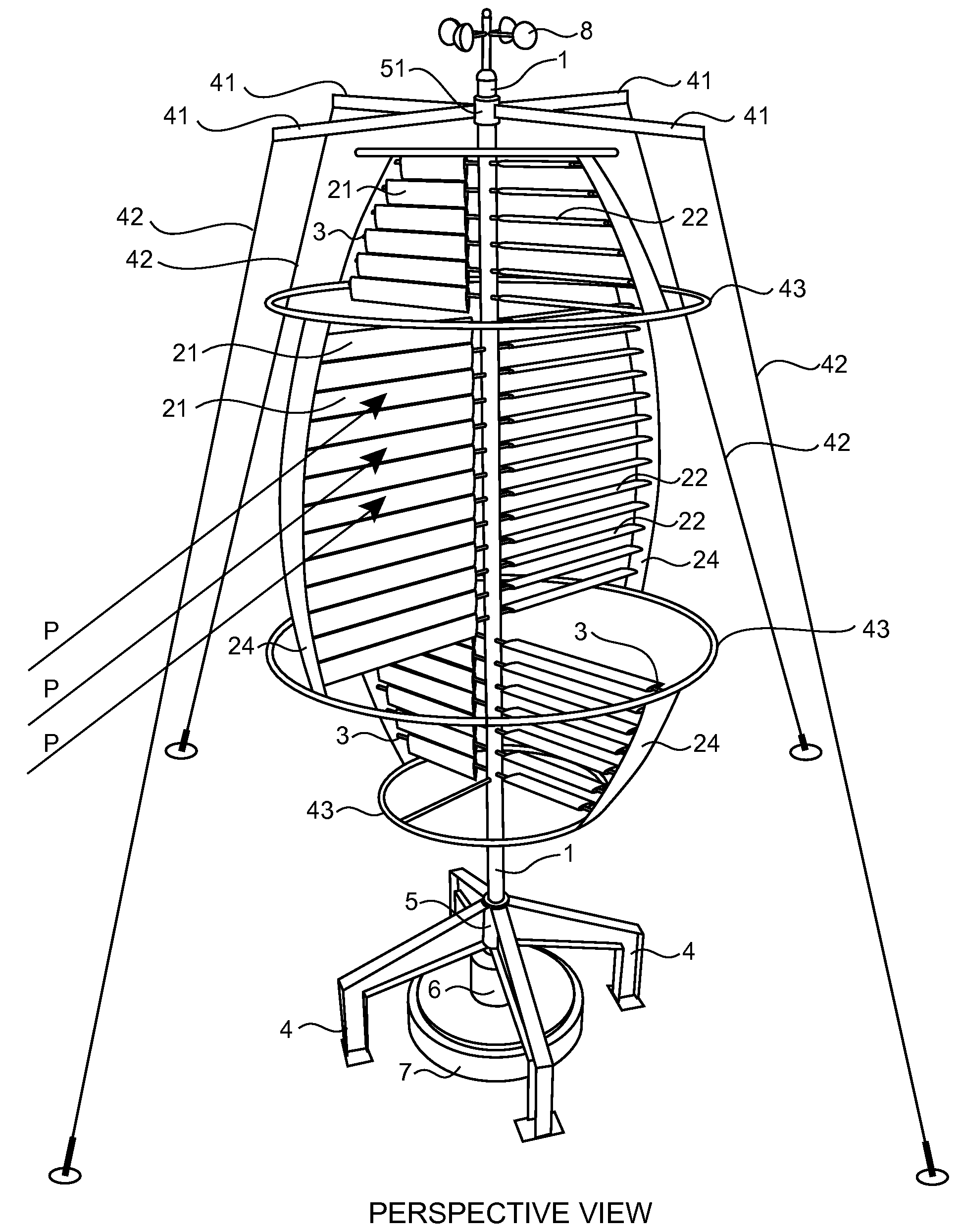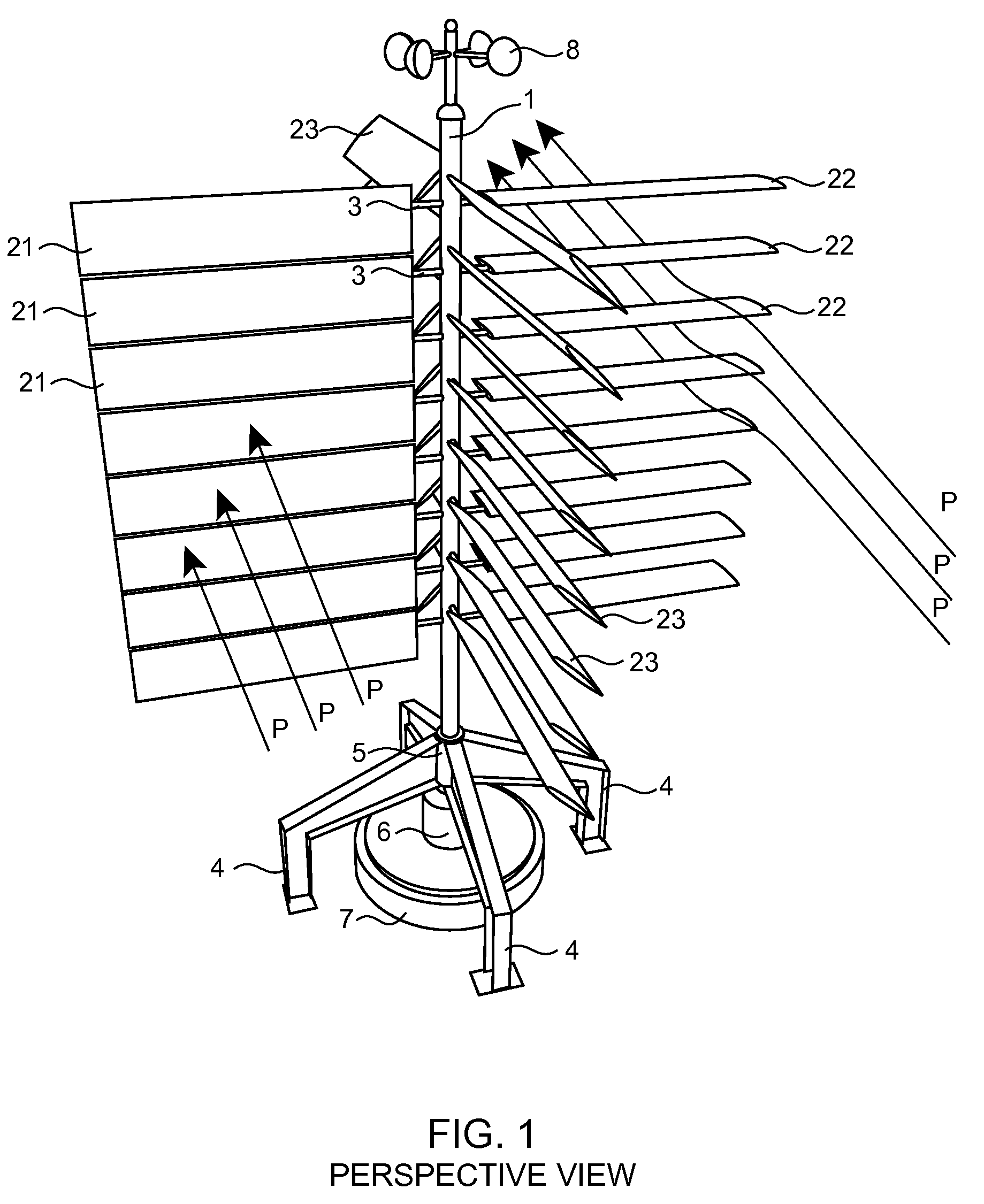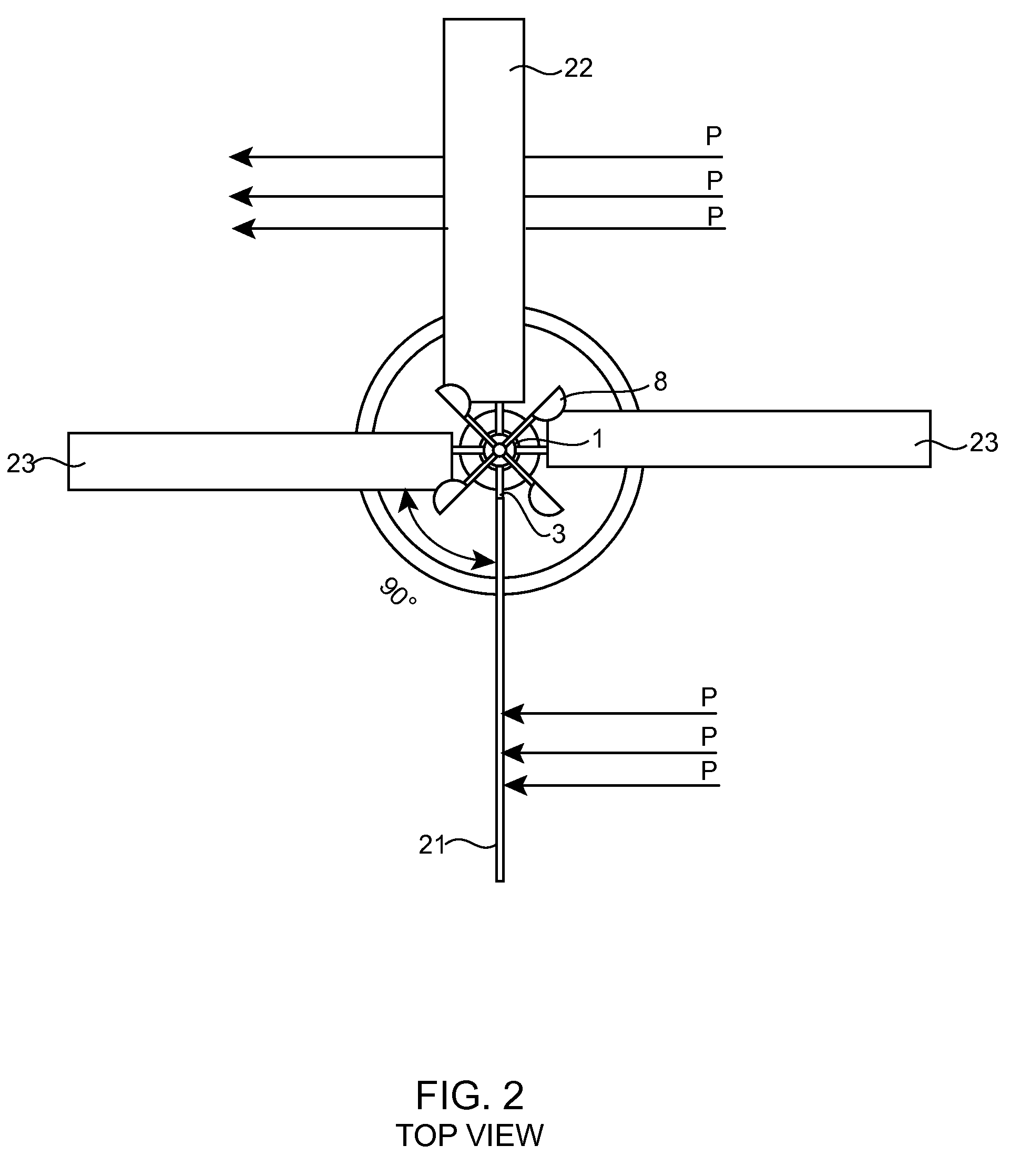Vertical axis sail-type windmill power transfer device
- Summary
- Abstract
- Description
- Claims
- Application Information
AI Technical Summary
Benefits of technology
Problems solved by technology
Method used
Image
Examples
Embodiment Construction
[0028]FIG. 1 presents a perspective view of the basic embodiment of the present invention, a vertical axis sail-type windmill power transfer device for efficiently harvesting wind power by increasing the effective surface of interaction with the wind (P). This embodiment describes the basic principles on which this invention is based. The sail dragging effect is achieved by using plurality of pairs of blades (21, 22, 23) that are permanently attached to freely rotating horizontal rods (3) penetrating the vertical output shaft (1). Each blade is preferably in airfoil shape and is fastened symmetrically on each side of the horizontal rod (3) by a spring-type safety mechanism (9FIG. 7a,b). Each blade is oriented at 90 degrees with respect to the other. The center of the weight (W) of each blade is offset from the pivot which causes the blades to constantly self-adjust when impacted by wind (P) coming from any direction so that one blade assumes a driving position (21) when the opposite...
PUM
 Login to View More
Login to View More Abstract
Description
Claims
Application Information
 Login to View More
Login to View More - R&D
- Intellectual Property
- Life Sciences
- Materials
- Tech Scout
- Unparalleled Data Quality
- Higher Quality Content
- 60% Fewer Hallucinations
Browse by: Latest US Patents, China's latest patents, Technical Efficacy Thesaurus, Application Domain, Technology Topic, Popular Technical Reports.
© 2025 PatSnap. All rights reserved.Legal|Privacy policy|Modern Slavery Act Transparency Statement|Sitemap|About US| Contact US: help@patsnap.com



